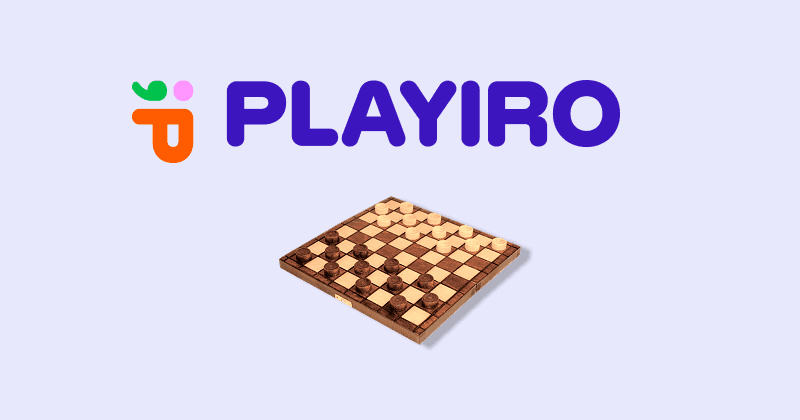
Draughts Rules
Draughts is a classic two-player strategy game of movement, capture, and positioning. Also known as Checkers in the U.S. and other regions, it’s simple to learn yet offers deep tactical gameplay. The game revolves around moving diagonal pieces across a board and capturing your opponent’s pieces by jumping over them.
Created By Adam Davis Fernsby
How to Play Draughts (aka Checkers)
Whether you're learning the basics or brushing up on the rules of draughts, this guide from Playiro covers everything from setup to special moves like kings and multiple jumps.
Preparations
- Players: 2
- Equipment:
- 1 square board (8x8) with alternating dark and light squares
- 12 pieces per player (traditionally black & white or red & black)
Setup
- Each player places their 12 pieces on the dark squares of the three rows closest to them.
- The bottom-left square should be dark.
- The player with the darker-colored pieces moves first.
Gameplay Overview
Draughts is played in turns, alternating between players.
Basic Moves
- Pieces move diagonally forward by one square.
- You may only move onto dark squares.
- Regular pieces (men) cannot move backward.
Capturing (Jumping)
- If an opponent’s piece is diagonally adjacent and the square beyond it is empty, you must jump over and capture it.
- Capturing is mandatory in most standard rules.
- Multiple captures are allowed in a single turn if available — this is called a multi-jump.
Kinging
When a piece reaches the furthest row (opponent’s back row):
- It is crowned a king.
- Kings can move and capture both forward and backward diagonally.
- Kinged pieces are marked by stacking two pieces or flipping one.
Winning the Game
The game ends when:
- One player captures all opponent pieces, or
- The opponent has no legal moves remaining (blocked).
If neither player can make progress and both only have a few pieces left, the game can end in a draw by agreement or stalemate.
Draughts Strategies and Tips
Draughts looks simple but requires careful planning and forward thinking.
Beginner Tips
- Control the center of the board for more mobility.
- Keep back-row pieces in place early to prevent easy kinging by your opponent.
- Group your pieces to protect each other — avoid leaving lone pieces.
Intermediate Tactics
- Set traps by baiting opponents into a jump that leads to a counter multi-jump.
- Think several moves ahead, especially when planning captures.
- Use kinged pieces aggressively to control open spaces and pressure your opponent.
Variants & Regional Differences
Draughts, or checkers, has several rule variations depending on region:
Draughts Rules UK (English Draughts)
- Played on an 8x8 board.
- Capturing is mandatory.
- Only one piece can be captured per jump, even during multi-jumps.
- Kings move one square per jump (not flying kings).
International Draughts
- Played on a 10x10 board with 20 pieces per player.
- Kings are “flying kings” — they can move and capture across multiple squares.
- Capturing sequences can become much longer.
American Checkers
- Played on an 8x8 board, similar to English Draughts.
- Minor variations in king movement and capture sequences.
- Kings also move one square at a time.
Overview of the Game Rules
| Aspect | Details |
|---|---|
| Objective | Capture all opponent pieces or block them completely |
| Movement | Diagonal, forward only (unless kinged) |
| Capturing | Jump diagonally over opponent pieces; multi-jumps allowed |
| King Moves | Kings move & capture both directions |
| Win | Opponent has no legal moves or all pieces are captured |